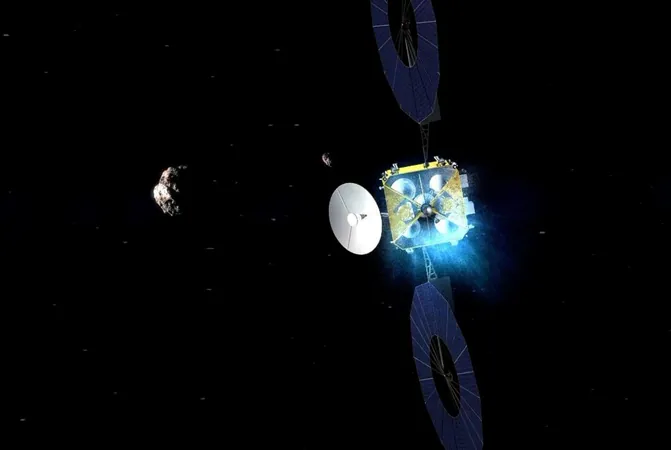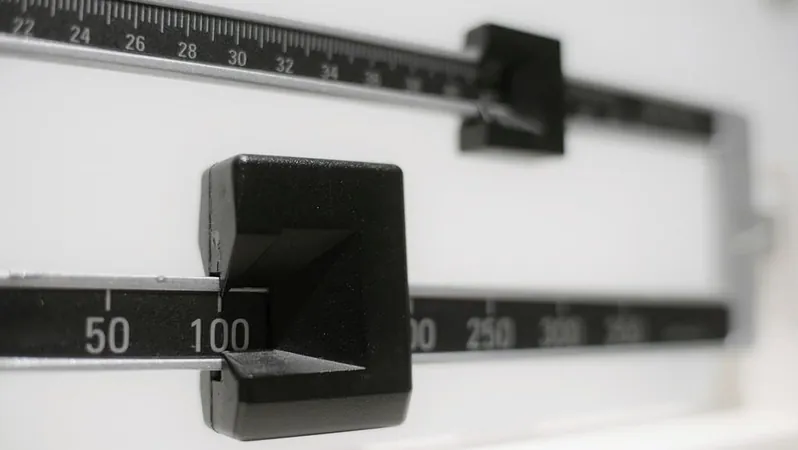
China's Groundbreaking Tianwen-2 Mission Set to Explore Asteroids and Comets
2025-05-19
Author: Emily
China Prepares for an Ambitious Voyage
Get ready, space enthusiasts! China is gearing up to launch its highly anticipated Tianwen-2 deep space mission on May 28. This remarkable journey aims to explore both a near-Earth asteroid and a comet, marking a significant leap in China's exploration efforts.
Countdown to Launch
The Tianwen-2 spacecraft is currently being integrated with the Long March 3B rocket at the Xichang Satellite Launch Center in China. The launch window is set to open at 12 p.m. Eastern (1600-2000 UTC) on May 28, with backup windows available on May 29 and 30, according to the China Aerospace Science and Technology Corporation (CASC).
Aiming for Cosmic Treasures
The primary mission of Tianwen-2 is to collect samples from the near-Earth asteroid 469219 Kamoʻoalewa (2016 HO3) and return them to Earth by late 2027. The mission will release a reentry module that will brave the atmosphere to deliver these cosmic samples, while the Tianwen-2 spacecraft will use Earth's gravity to slingshot towards the exciting six-year journey to comet 311P/PANSTARRS.
Unlocking the Mysteries of Kamoʻoalewa
Kamoʻoalewa, measuring between 40 to 100 meters in diameter, is a fascinating quasi-satellite of Earth. Researchers suggest it might even be a fragment of the Moon blasted into space by an impact event. Analyzing samples from this asteroid could unveil vital insights into its origins and mineral composition.
Innovative Sampling Techniques
Tianwen-2 will employ up to three innovative sampling techniques: hover sampling with a robotic arm, touch-and-go (TAG) using a rotating brush, and anchored sampling with drilling capabilities, depending on the asteroid's terrain. These methods echo tactics used by NASA’s OSIRIS-REx and JAXA’s Hayabusa2 missions.
A First for China: High-Speed Reentry
While China has previously achieved lunar sample return missions, Tianwen-2 will present new challenges with its higher reentry speed of 12 kilometers per second—marking China's first second-cosmic-velocity atmospheric reentry. CASC has already conducted high-altitude parachute tests to prepare for this venture.
Exploring Comet 311P/PANSTARRS
Following its asteroid exploration, Tianwen-2 will delve into comet 311P/PANSTARRS, which holds unique characteristics that offer clues about the transition from asteroids to comets. The spacecraft will study the comet's orbital dynamics, surface composition, and activity mechanisms, making it an exciting prospect for scientists.
A Path Towards Future Exploration
Tianwen-2 is the second mission in the Tianwen series, following the successful Tianwen-1, which featured a Mars orbiter and the Zhurong rover. Future explorations include the ambitious Tianwen-3 Mars sample return mission, slated for late 2028, and the Tianwen-4 mission in 2030, which aims to observe Jupiter and its moons.
This remarkable journey not only showcases China's growing capabilities in space exploration but also contributes to our understanding of the solar system, astrobiology, and the potential for life beyond Earth.









 Brasil (PT)
Brasil (PT)
 Canada (EN)
Canada (EN)
 Chile (ES)
Chile (ES)
 Česko (CS)
Česko (CS)
 대한민국 (KO)
대한민국 (KO)
 España (ES)
España (ES)
 France (FR)
France (FR)
 Hong Kong (EN)
Hong Kong (EN)
 Italia (IT)
Italia (IT)
 日本 (JA)
日本 (JA)
 Magyarország (HU)
Magyarország (HU)
 Norge (NO)
Norge (NO)
 Polska (PL)
Polska (PL)
 Schweiz (DE)
Schweiz (DE)
 Singapore (EN)
Singapore (EN)
 Sverige (SV)
Sverige (SV)
 Suomi (FI)
Suomi (FI)
 Türkiye (TR)
Türkiye (TR)
 الإمارات العربية المتحدة (AR)
الإمارات العربية المتحدة (AR)